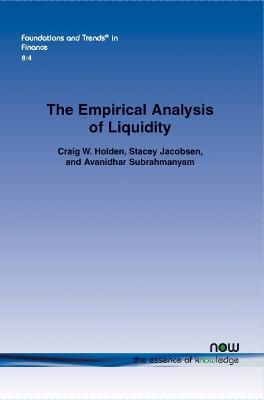Foundations and Trends (R) in Finance
1 total work
The Empirical Analysis of Liquidity
by Craig W. Holden, Stacey Jacobsen, and Avanidhar Subrahmanyam
Published 18 December 2014
The Empirical Analysis of Liquidity starts with an overview of how liquidity is Measured and specialized issues in liquidity Measurement. Next, it examines what is known about cross-sectional and time-Series patterns in liquidity. The authors then review how liquidity relates to the corporate finance literature, including governance, executive compensation, capital structure, and payout policy. They also review how liquidity influences the asSet pricing literature, including return differentials due to average liquidity cost, liquidity premia for systematic liquidity risks, the impact of liquidity on market efficiency, and the impact of liquidity on the law of one Price. Finally, some open questions and opportunities for future research are discussed.
The Empirical Analysis of Liquidity is organized as follows. Section 2 considers the approaches taken to Measure liquidity. Section 3 considers cross-sectional and time-Series patterns in liquidity, commonality it liquidity, the impact of exchange design, the impact of exogenous policy shifts on liquidity, and the impact of high-frequency traders. Section 4 analyzes the relation between liquidity and corporate financial decisions. Section 5 explores the impact of liquidity on asSet pricing, and Section 6 concludes with directions for future research.
The Empirical Analysis of Liquidity is organized as follows. Section 2 considers the approaches taken to Measure liquidity. Section 3 considers cross-sectional and time-Series patterns in liquidity, commonality it liquidity, the impact of exchange design, the impact of exogenous policy shifts on liquidity, and the impact of high-frequency traders. Section 4 analyzes the relation between liquidity and corporate financial decisions. Section 5 explores the impact of liquidity on asSet pricing, and Section 6 concludes with directions for future research.
